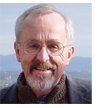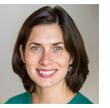Strong STEM, Beautiful BLOSSOMS
 The Washington DC USA Science & Engineering Festival is just over one month away, April 26 & 27.The conference will be held at the Walter E. Washington Convention Center. This is probably the largest and most well attended STEM event in the USA. We hope to see many of you there. The Washington DC USA Science & Engineering Festival is just over one month away, April 26 & 27.The conference will be held at the Walter E. Washington Convention Center. This is probably the largest and most well attended STEM event in the USA. We hope to see many of you there.
MIT BLOSSOMS will be there: Engineering Pavilion, Hall A, Booth Number 563. Please drop by, say Hello, and take some of the BLOSSOMS Challenges:
- Is it true that my friends on Facebook have more friends than I do? And why?
- Can it be that all the children of Lake Wobegon are "above average"?
- If I break a wooden yardstick at two "random points," what is the likelihood that I can make a triangle with the resulting 3 pieces?
- What fraction of the mass of a dried log comes from the soil?
- How do mosquitoes fly in the rain?
Read more.
"Why should I learn this?"
 When I was 25 years old, I served as a forensics expert for the Innocence Project. The volunteer position was one of several personally transformative experiences I had while working my "day job" as a forensic biologist for the City of New York. On their website, the Innocence Project describes itself as a “national litigation and public policy organization dedicated to exonerating wrongfully convicted individuals through DNA testing and reforming the criminal justice system to prevent future injustice.” That may be what the organization means to the most people, but to me, it finally answered a question that had been nagging me throughout my education—how were the topics I studied in STEM courses related to the real world? For years, I had dutifully learned about various concepts that seemed totally disconnected from the world I lived in and cared about. At the Innocence Project, I saw how the bench work I had been doing was not in a vacuum, but rather it directly impacted someone else’s life and was important. That realization sparked a curiosity about the biological foundation of forensics that inspired me to pursue advanced study in graduate school. Read more. When I was 25 years old, I served as a forensics expert for the Innocence Project. The volunteer position was one of several personally transformative experiences I had while working my "day job" as a forensic biologist for the City of New York. On their website, the Innocence Project describes itself as a “national litigation and public policy organization dedicated to exonerating wrongfully convicted individuals through DNA testing and reforming the criminal justice system to prevent future injustice.” That may be what the organization means to the most people, but to me, it finally answered a question that had been nagging me throughout my education—how were the topics I studied in STEM courses related to the real world? For years, I had dutifully learned about various concepts that seemed totally disconnected from the world I lived in and cared about. At the Innocence Project, I saw how the bench work I had been doing was not in a vacuum, but rather it directly impacted someone else’s life and was important. That realization sparked a curiosity about the biological foundation of forensics that inspired me to pursue advanced study in graduate school. Read more. |
 |
BioBuilder’s Biotech Clubs support student-driven STEM projects
 Synthetic biology, one of the newest areas of research, combines biology and engineering to construct biological systems with new purposes. As a new field, synthetic biology is of interest to secondary and post-secondary school teachers and students, but very little formal curriculum is available to introduce the content into the classroom. In 2011, BioBuilder was founded with the mission of introducing synthetic biology to a wider population. With input from both high school teachers and researchers at MIT, our BioBuilder modules introduce current synthetic biology research questions through online animations, hands-on investigative modules and data sharing portals. Written with flexibility in mind, BioBuilder has allowed 100s of teachers around the country to emphasize engineering, molecular biology, and scientific inquiry in their classrooms. Read more. Synthetic biology, one of the newest areas of research, combines biology and engineering to construct biological systems with new purposes. As a new field, synthetic biology is of interest to secondary and post-secondary school teachers and students, but very little formal curriculum is available to introduce the content into the classroom. In 2011, BioBuilder was founded with the mission of introducing synthetic biology to a wider population. With input from both high school teachers and researchers at MIT, our BioBuilder modules introduce current synthetic biology research questions through online animations, hands-on investigative modules and data sharing portals. Written with flexibility in mind, BioBuilder has allowed 100s of teachers around the country to emphasize engineering, molecular biology, and scientific inquiry in their classrooms. Read more.
Liberal Arts and STEM at SXSWedu
 I had promised to write about ISSIP’s role in e-mentoring but I had the opportunity to attend SXSWedu in March and wanted to share my experience. Thousands from around the world attended more than 250 sessions during the four days. Last year I was focused on the Maker Movement and what it could do for STEM education. Many sessions discussed this topic again this year but I focused my attention on discussions of how the liberal arts fit in today’s STEM world. (Full disclosure: my undergraduate degree is a BA and all my graduate degrees are in the pure sciences although I was an experimentalist). I had promised to write about ISSIP’s role in e-mentoring but I had the opportunity to attend SXSWedu in March and wanted to share my experience. Thousands from around the world attended more than 250 sessions during the four days. Last year I was focused on the Maker Movement and what it could do for STEM education. Many sessions discussed this topic again this year but I focused my attention on discussions of how the liberal arts fit in today’s STEM world. (Full disclosure: my undergraduate degree is a BA and all my graduate degrees are in the pure sciences although I was an experimentalist).
Some people have suggested that STEM is the new liberal arts. My personal view, reinforced by what I heard through all the sessions that I attended, is that STEM is part of a liberal arts education but not a full replacement. While our world has evolved, Thomas Jefferson’s statement still rings true, "An educated citizenry is a vital requisite for our survival as a free people.” Today an understanding of STEM and the interrelationship among its components and the elements of a liberal arts education is necessary to meet this goal. Read more. |